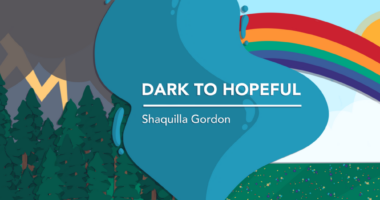The challenges involved in living with invisible illnesses
It can be difficult for others to understand how I feel when I look 'fine'

When people picture someone with an illness or disability, they often visualize a wheelchair, medical device, or some other visible sign that the person is facing health challenges. But there’s not always an external indicator that someone is living with an illness.
As a Talkspace article explains, “An invisible illness is an umbrella term for any medical condition that isn’t easily visible to others.”
The term “invisible illnesses” became important to me after my diagnoses with aplastic anemia and paroxysmal nocturnal hemoglobinuria (PNH). I questioned why I kept hearing the phrase “But you don’t look sick” when I explained what I was going through. Despite spending countless days in the hospital, receiving many blood and platelet transfusions, and battling fatigue, it remained difficult for people to understand that even though I may look OK on the outside, that’s not necessarily how I feel.
Describing my symptoms
Hearing that I look “fine” has motivated me to find ways to explain PNH symptoms such as fatigue and shortness of breath, which aren’t always obvious to others. I try to convey how these issues make me feel.
For example, fatigue is different from laziness. My body feels heavier, which makes it more challenging to walk or talk at times. It feels like my body is shutting down and asking for rest.
In my column “How I handle hearing the phrase ‘But you don’t look sick,’” I explained how the spoon theory helps explain my energy levels: “For example, what if I have seven spoons, but during that day I must complete 10 tasks? After I’ve used my seven spoons, I’m left with none, which means I have no more energy to use; I’m depleted and need to recharge until the next day.” This is another way I can convey what I’m experiencing.
Other challenges
Living with invisible illnesses can give rise to many other challenges. For example, needing to take paid time off work due to a symptom flare or an emergency room visit may confuse co-workers who don’t understand the severity of your health issues. I’ve found it difficult to share about my illnesses at work, though, as I worry others may question my capabilities.
I also encounter challenges when talking with friends and family about my blood disorders. While they may have a basic understanding of what I deal with on a day-to-day basis, it can be difficult for others to grasp why I may need to cancel plans or skip a family function if I look “fine.”
These are just a few of the many challenges I have faced while living with invisible illnesses. What challenges have you encountered? Please share in the comments below.
Note: PNH News is strictly a news and information website about the disease. It does not provide medical advice, diagnosis, or treatment. This content is not intended to be a substitute for professional medical advice, diagnosis, or treatment. Always seek the advice of your physician or other qualified health provider with any questions you may have regarding a medical condition. Never disregard professional medical advice or delay in seeking it because of something you have read on this website. The opinions expressed in this column are not those of PNH News or its parent company, Bionews, and are intended to spark discussion about issues pertaining to paroxysmal nocturnal hemoglobinuria.








Leave a comment
Fill in the required fields to post. Your email address will not be published.